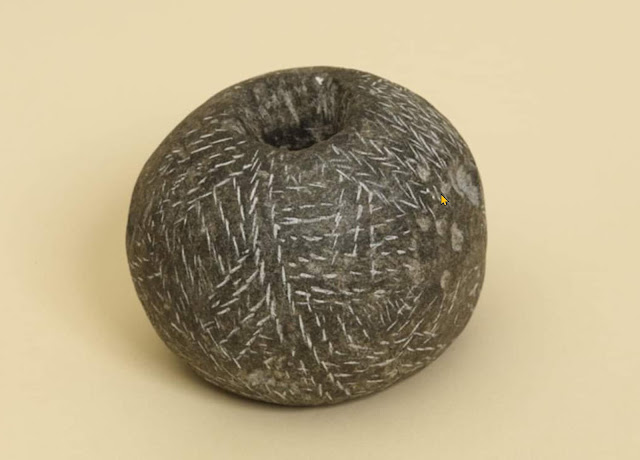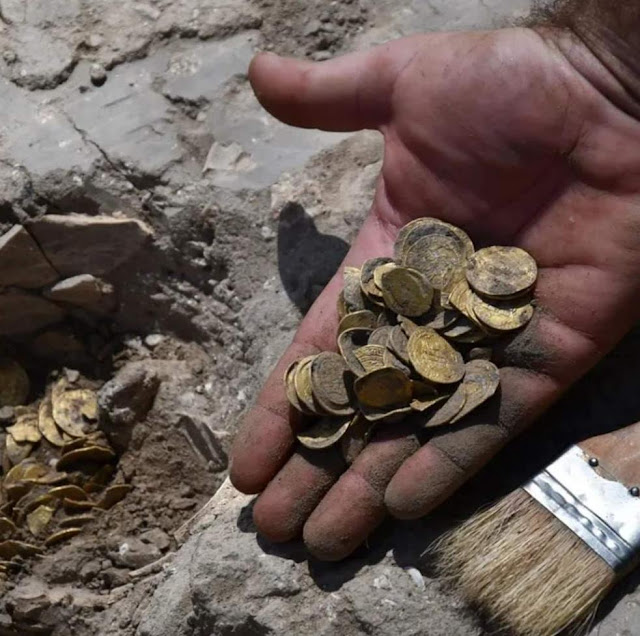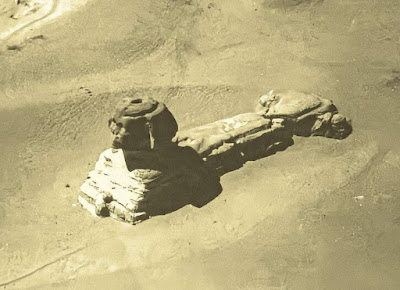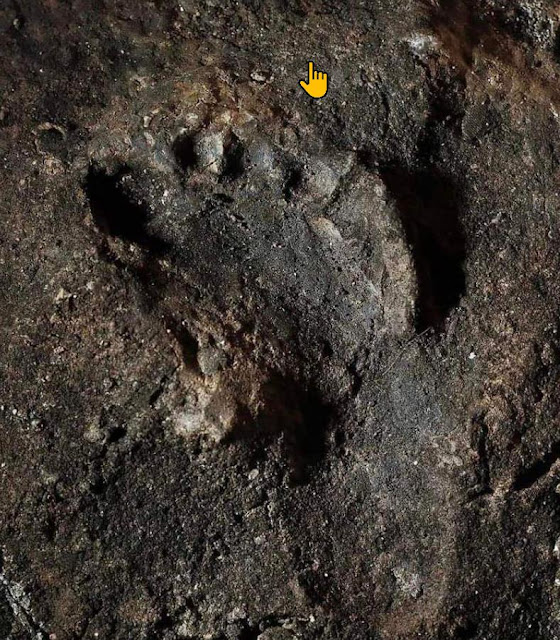Rashid Minhas, the young Pakistani Air Force pilot, touches the height of gory. On Aug 29, President General A. M. Yahya Khan announced the posthumous award of Nishan-i-Hader, the highest gallantry award, to Pilot Officer Rashid Minhas, who prevented a Pakistan Air Force Plane from being hijacked to India and made the supreme sacrifice in the service of the nation.
Historical Planet
Monday, 2 September 2024
Wednesday, 8 May 2024
Victorian Wall Letter Box of 1857
Although pillar boxes are the most common, they are not the only type of letter box. In 1857, to provide a more affordable, lower-capacity option for smaller towns and rural areas, wall-mounted boxes were introduced. These were initially small, rectangular boxes that could be mounted into existing walls or specially constructed brick pillars. This particular box is from the 1880s, you can tell this by the style of it.
Read More: Niccolò Piccinni: Famous Italian operatic Composer
Tuesday, 7 May 2024
Decorated round hammer head is an artifact from the Mesolithic perio
This antique decorated round hammer head is from the Mesolithic period, approximately 9000-5000 BC. It is pretty spectacular, with a diameter of 91 mm. The Finnish Heritage Agency takes care of this relic. During the Mesolithic period, humans created many types of art and artifacts to reflect their daily existence. This hammer head might have been used for a variety of tasks, and its ornamentation suggests it may have held special importance or function.
Read More: Mind-blowing Gold Bar Discovered from a Treasure Ship that sank in 1622 AD
Monday, 6 May 2024
Viking era sword was recovered from Lummelunda, Sweden.
This Viking era sword was recovered from Lummelunda, Sweden. This sword, which dates back to between 800-1100 AD, is notable for its intricate inlay work with brass wire. This type of craftsmanship is a testament to the advanced metalworking skills of the Vikings during this period. The sword is now housed at the Statens Historiska Museer in Sweden, where it serves as a valuable artifact for understanding Viking history and culture. The intricate brass wire inlay on the sword would have been a sign of prestige and wealth during the Viking era. It’s truly a remarkable piece of history. Read More: Where did the Game of Ice Hokey Originate?
Wednesday, 1 May 2024
Coins Discovered dated to Abbasi Caliphate.
Two Teens Volunteering on an Archaeological Dig in Israel Uncovered Solid-Gold Treasure Buried More Than 1,000 Years Ago. The coins date to the Abbasi Caliphate, which ruled 1,100 years ago during the Golden Age of Islam.
Read More: 8 Most Fascinating Blue Holes in the World
Worlds Fastest Steam Engine
Worlds Fastest Steam Engine - The Legendary LNER Class A4 ‘Mallard’ ran 126mph in 1938! - Sir Nigel Gresley sure knew how to design a beautiful, fast steam engine!
Read More: Exploring the Legendary Life and Legacy of Amos Allman
Thursday, 25 April 2024
Photo of the Sphinx in the late 1800s.
This is a photo of the Sphinx in the late 1800s. It was taken from a hot air balloon and it was still covered by sand. Read More: Natchez Indian Trail History
Wednesday, 24 April 2024
The Crown of Bahadur Shah Zafar 1775-1862)
The Crown was crafted in the second quarter of the 19th century CE, most probably in Delhi or surrounding areas, by goldsmiths and jewelers. It is, strictly speaking, not a crown, but an article of headdress. the Aftermath of the Indian Mutiny of 1857 CE, and Delhi was recaptured from Indian freedom fighters by East India Company's Army on September 21, 1857 CE, Their atrocities and intimidation reached the end of tolerance. Emperor along with his two sons and grand son took shelter in Humayun's Tomb in Delhi.
Mirza Ilahi Bux, a close associate of the ruler was forced to reveal where the ruler and others were hiding. At last emperor and his heirs surrendered to Major Hodson who took his captives back to Red Fort. On the way near Khooni Gate (Dharwaza), the major ordered Bahadur Shah Zafar's sons, Mirza Mughal and Mirza Khizer Khan, and his grandson, Mirza Abu Bakr, to get off the carriage and disrobe.
He then shot them dead in cold blood and hung their bodies near the gate. The official end of the Mughal Empire was marked in Delhi by the auction of quantities of jewels and other valuable relics from Bahadur Shah’s court. Bahadur Shah (1775–1862 CE), was held prisoner in a dingy room of his ancestral fort during the summer and later exiled to Rangoon, Burma (Myanmar), where the last Mughal Emperor, died at 5am on Friday, November 7, 1862. He was given a hurried and ignominious burial in Rangoon.
Read More: The Modoc War 1872
Thursday, 18 April 2024
Cherry Street looking toward the intersection with Oliver Street.
New York City, circa 1932.Cherry Street looking toward the intersection with Oliver Street.The building in the middle with the columns is a free public bath house at 100 Cherry Street. The whole area was demolished in late 1940's to make way for an Alfred E. Smith housing complex.
Wednesday, 17 April 2024
Eridu, First city in history according to Mesopotamian sources.
Eridu, First city in history according to Mesopotamian sources. The Sumerian King List it’s referenced with the mythical rulers before the Universal Flood with incredibly long reigns. Founded in 5400 BC during the Early Ubaid period.
Read More: The Mysterious Tarim Mummies Buried in a Boats in Chinese Desert
Monday, 15 April 2024
A Massive Ancient Tree found in Thailand
A fossilized tree was discovered in northern Thailand, with a height estimated at 72.2m, it suggests that this ancient tree could have stood over 100m. It's presence in this humid tropical environment dates it back 800,000 years. Read More: The Golden Uraeus
Tuesday, 9 April 2024
A Neanderthal footprint preserved in the sediments of the Grotte di Toirano, Liguria,
A Neanderthal footprint preserved in the sediments of the Grotte di Toirano, Liguria, Italy. The last Neanderthals left the stage around 40,000 years ago.
Read More: The Unbelievable Chinchorro Mummification Culture
Monday, 1 April 2024
Liba Radij aged 17, Executed by the Nazis in 1943
Photo
of the Yugoslavian fighter girl (Liba Radij) aged 17, while executed by
the Nazis in 1943. The commander said to her: If you mention the names
of your colleagues , I will release you immediately. She said to him:
You will know them when they come to avenge me. And indeed , they later
came and executed him on the same tree !!. The cowards die while they
are alive, and the brave live while they are dead. Read More: Topkapı Dagger: Most Valuable Dagger in the World
Sunday, 31 March 2024
Cheddar Man, the oldest complete human skeleton found in the British Isles
Cheddar Man, the oldest complete human skeleton found in the British Isles, was discovered in Somerset, England, back in 1903. Dating back around 10,000 years, this Mesolithic find shed light on early human life in the region. What made Cheddar Man intriguing was his physical appearance, revealed through DNA testing in 2018. He had dark skin, blue eyes, and curly hair, challenging previous assumptions about the complexion of early Europeans. Genetic analysis linked him to the Western Hunter-Gatherers, an ancient population who were the early inhabitants of Europe after the Ice Age. The skeleton was found in Gough’s Cave alongside various artifacts, including flint tools and animal remains. Descendants of these early humans are believed to have influenced the genetic makeup of present-day Europeans. Cheddar Man's remains, on display at the Natural History Museum in London, continue to captivate visitors, offering a glimpse into the enigmatic past of our ancient ancestors.
Read More: Chokundi Cemetery – Masterpiece of Architecture and Sculpture
Thursday, 29 February 2024
Remarkable Picture of World War I
We did not get any sleep at all last night because our artillery kept firing nonstop. Everything was trembling, and the Germans only gave us a meek response. However, the day is still young and they might send us more artillery. There is nothing to fear because I do not have any chores to complete today.














